Related Research Articles

Oliver Hazard Perry was an American naval commander, born in South Kingstown, Rhode Island. A prominent member of the Perry family naval dynasty, he was the son of Sarah Wallace Alexander and United States Navy Captain Christopher Raymond Perry, and older brother of Commodore Matthew C. Perry.
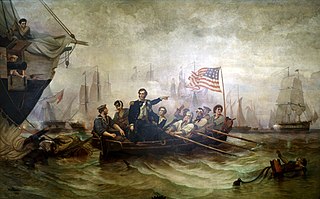
The Battle of Lake Erie, also known as the Battle of Put-in-Bay, was fought on 10 September 1813, on Lake Erie off the shore of Ohio during the War of 1812. Nine vessels of the United States Navy defeated and captured six vessels of the British Royal Navy. This ensured American control of the lake for the rest of the war, which in turn allowed the Americans to recover Detroit and win the Battle of the Thames to break the Indian confederation of Tecumseh. It was one of the largest naval battles of the War of 1812.
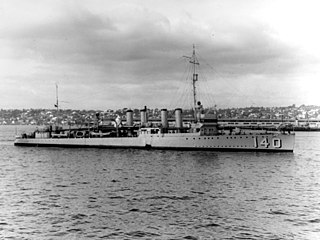
USS Claxton (DD-140), named for Thomas Claxton, was a Wickes-class destroyer in the United States Navy. Entering service in 1919, the destroyer saw intermittent use during the interwar period. During World War II, Claxton was transferred to the Royal Navy and renamed HMS Salisbury. The ship saw service in the Battle of the Atlantic before sold for scrapping in 1944.

USS Claxton (DD-571), a Fletcher-class destroyer, was the second ship of the United States Navy to be named for Thomas Claxton, born in Baltimore, Maryland.
Two United States Navy destroyers have been named in honor of Thomas Claxton.

David Conner was an officer and commodore of the United States Navy. He served in the War of 1812 and led the Home Squadron during the Mexican–American War. He led the successful naval assault during the siege of Veracruz which included the landing of 10,000 U.S. troops, the largest U.S. military amphibious assault at the time. He served on the Board of Navy Commissioners; as the first Chief of the Bureau of Construction, Equipment, and Repair; as a Special Diplomatic Agent to Mexico and commanded the Philadelphia Naval Yard.
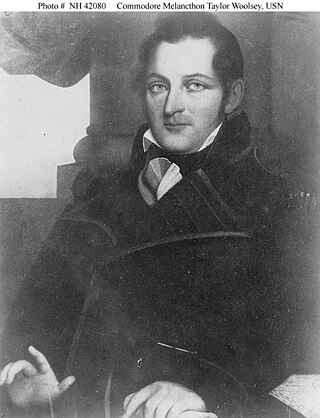
Melancthon Taylor Woolsey was an officer in the United States Navy during the War of 1812 and battles on the Great Lakes. He supervised warship construction at Navy Point in Sackets Harbor, New York, and later had a full career in the Navy.

James Lawrence was an officer of the United States Navy. During the War of 1812, he commanded USS Chesapeake in a single-ship action against HMS Shannon, commanded by Philip Broke. He is probably best known today for his last words, "Don't give up the ship!", uttered during the capture of the Chesapeake. The quotation is still a popular naval battle cry, and was invoked in Oliver Hazard Perry's personal battle flag, adopted to commemorate his dead friend.
John Joliffe Yarnall (1786–1815) was an officer in the United States Navy during the War of 1812 and the Second Barbary War.
Daniel Turner was an officer in the United States Navy.
Henry Laub was an officer in the United States Navy during the War of 1812.

Samuel Hambleton was an officer in the United States Navy who served with distinction during the War of 1812.
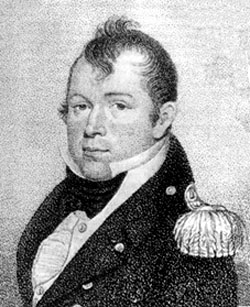
Jesse Duncan Elliott was a United States naval officer and commander of American naval forces in Lake Erie during the War of 1812, especially noted for his controversial actions during the Battle of Lake Erie.

Amherstburg Royal Naval Dockyard was a Provincial Marine and then a Royal Navy yard from 1796 to 1813 in Amherstburg, Ontario, situated on the Detroit River. The yard comprised blockhouses, storehouses, magazine, wood yard and wharf. The yard was established in 1796 to support the Upper Canada Provincial Marine after Great Britain ceded a pre-existing shipyard on the Detroit River to the United States. Amherstburg Royal Naval Dockyard constructed four warships for the Lake Erie detachment of the Provincial Marine before and during the War of 1812. In 1813 the dockyard was abandoned and destroyed when the British retreated and never reopened. In 1928, the site was designated a National Historic Site of Canada.

Destroyer Squadron 23 is a squadron of United States Navy destroyers based out of San Diego, California. The squadron is best known for its actions during World War II, most notably the Battle of Cape St. George, under the command of then-Commodore Arleigh Burke. Currently, the DESRON is assigned to Carrier Strike Group Nine, which includes USS Theodore Roosevelt (CVN-71), USS Chosin (CG-65), USS Lake Erie (CG-70), and Carrier Air Wing Eleven.

Joseph Smith was a rear admiral of the United States Navy, who served during the War of 1812, the Mexican–American War, and the American Civil War.
Thomas Breese was an American naval officer. Best known for his service under Oliver Hazard Perry during the 1813 Battle of Lake Erie, he served in the United States Navy for another 33 years, including as a paymaster for over two decades.
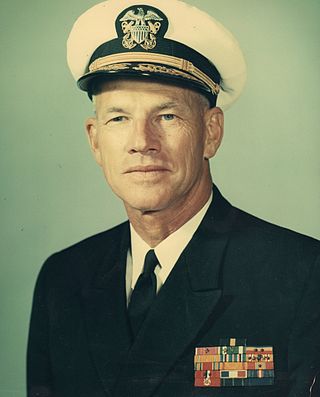
Lloyd Montague Mustin was a vice admiral in the United States Navy and among the namesakes of USS Mustin (DDG-89). He took part in developing the Navy's first lead-computing anti-aircraft gun sight, which proved of major importance in the air-sea actions of World War II, and he served on the cruiser USS Atlanta during the naval battle of Guadalcanal. His ship was lost during that action, and with other survivors he landed on Guadalcanal and served ashore with a naval unit attached to the First Marine Division. His postwar service included commands at sea and development and evaluation of weapon systems. He later served as director of operations for the Joint Chiefs of Staff during the Vietnam War.
Claxton is a surname. Notable people with the surname include:
Thomas Claxton was the Doorkeeper of the United States House of Representatives from 1795 to 1821. While being Doorkeeper, Claxton was also the "Agent for furnishing the President's House" for both John Adams and Thomas Jefferson.
References
- ↑ Parsons, Usher (1862). Brief Sketches of the Officers who Were in the Battle of Lake Erie. J. Munsell. pp. 7.
Thomas Claxton doorkeeper.
- 1 2 "USS CLAXTON (DD-140)". NavSource Naval History. Retrieved November 5, 2018.
- ↑ "USS CLAXTON (DD-571)". NavSource Naval History. Retrieved November 5, 2018.
- ↑ "U.S.S. Claxton". USSClaxton. Retrieved November 5, 2018.
 This article incorporates text from the public domain Dictionary of American Naval Fighting Ships .
This article incorporates text from the public domain Dictionary of American Naval Fighting Ships .